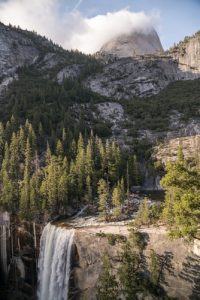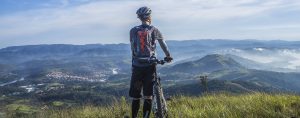Among those questions we get asked most often by novices is: How can I begin in Landscape Photography?
- Get the Ideal photography gear
- Learn How to take pics
- Master post-processing
#1: Get the Proper Photography Equipment
First — and clearly — you will need a camera.
What type of camera do I want?
Before you spend a lot of money on photography equipment and venture out, ask yourself what sort of landscape photographer you are. Are you a newcomer hoping to shoot some photographs that are fantastic ? Are you seeking to pursue landscape photography as a avocation that is serious?
An inexpensive mirroless or a DSLR or a camera is nice, if you are looking to shoot some landscape photographs that are fantastic on the holiday. You understand what you are doing and if the terms are correct, you may take landscape photographs that are good.

On the flip side, if you’re likely to wake up at ungodly hours, then put up with horrible weather, drive long distances, battle grizzly bears, and save the princess simply to have the upcoming great landscape photograph… you will probably need a DSLR (Digital Single Lens Reflex) or even Mirrorless camera. Usually, canon camera models are great for beginners or entry level cameras.
What additional photography gear do I want?
For landscape photography, then you need a head and a tripod. Conditions change during the day. And, if you’re shooting in the day conditions make it essential to keep your camera steady. Beginner landscape photography gear: a ball head and A tripod. These tripods maintain the camera firmly than the tripods and are hardy. A ball-head using a latch allows you to preview a picture or to take your camera off your own tripod.
#2: Take Classes
With knowing the settings that are focusing, Begin and focus. Some basic info is provided by your guide, but an online search offers details. Discover to use this Liveview much more, and focusing alternative if you’ve got it, find out about focus modes on your camera and how to correct your focus stage. Apart attention setting, there are tons of factors that may impact attention in your pictures… from making use of a tripod, to knowing aperture and depth of field and much more. You want these skills to receive picture photographs that are sharp.
You’re going to have the ability to use the principals As soon as you know it. Photography informative article, on the other hand, is a artistic ability that has almost unlimited potential… and it is something that you never quit learning.
Some newcomer landscape photographers locate abilities more challenging to master than abilities. As soon as you realize why they are helpful, they can be broken by you often as you’d like. Recall — that you will be the artist. Thus, you create the rules.
Understand attention setting functions, and you also know a little about photography classes once your camera vulnerability can be controlled by you, you’re prepared to test your hand.
#3: Post-processing
The following step for newcomer landscape photography would be to learn post-processing.
 If you aren’t knowledgeable about this world of post-processing, I’d advise you to do some research and discover out what choices are available for you until you choose to devote money and some time learning about resources.
If you aren’t knowledgeable about this world of post-processing, I’d advise you to do some research and discover out what choices are available for you until you choose to devote money and some time learning about resources.
The initial step in attempting to find processing would be converting your RAW pictures into TIFF or JPEG. SLR cameras come which you could use for conversion. There are plenty of RAW converters in the marketplace. They provide you more choices for converting a RAW picture photograph. Learn about your choices and choose which RAW converter that you would like to use.
Attempt to analyze your picture: When you pick a RAW converter and make a decision as to what alterations are essential. We utilize also our memory of this scene and the histogram to direct our alterations.
Some newcomer landscape photographers begin thinking they can fix their mistakes. That mindset may mean that you’ll devote time attempting to make — and will make you a photographer. As opposed to relying upon post-processing to make things , challenge to catch the spectacle in-camera. That will not necessarily be possible, but you are going to train yourself take advantage of your gear and to realize lighting.

